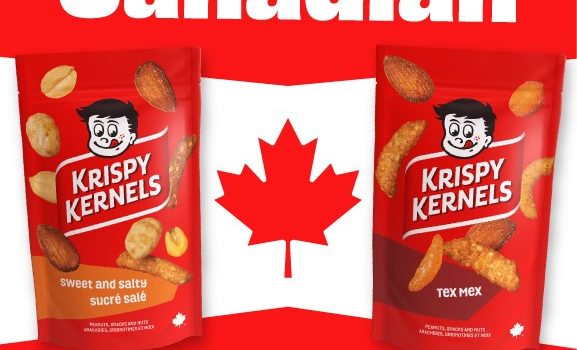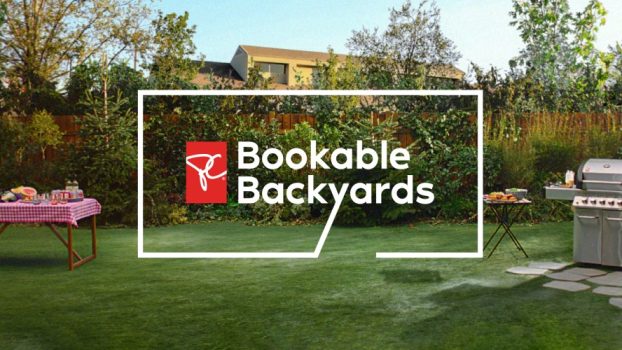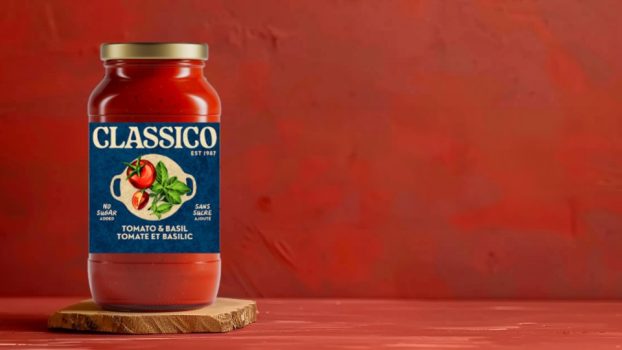Danone sells food products, Chantelle sells lingerie. Both international companies are based in Paris, and both have campaigns underway in Quebec. Danone is using a separate campaign for the Quebec market, Chantelle is using the same campaign all over the world.
Thierry Houillon, the Montreal-based president of Danone (Canada), says that using local soap star Sophie Lorin rather than national spokesperson Cindy Crawford in Quebec helped increase sales of Silhouette yogurt by 45% over the duration of the campaign. Meanwhile, Robert Setlakwe, president of Chantelle’s Montreal-based distributor Saint Hilaire, is launching a campaign hitting Canadian fashion magazines and bathroom stalls this spring that’s straight out of head office. Taking a cue from designers such as Prada, Gucci and Yves St. Laurent, the ads feature fashion models in very suggestive situations. The copy, ‘Chantelle Lingerie France,’ is exactly the same across the country, be it in a bathroom stall in Vancouver or in Elle Quebec.
The two campaigns bring into sharp focus the debate about whether Quebec demands its own creative. Simply put, right now some think it’s worth it, and some don’t. Maybe it depends on the product, or the target demo. Or, perhaps it depends on the global strategy, or the local competition. One thing’s for sure: in an age when marketers are demanding hard figures to justify every extra dollar spent, it won’t be long before investment in original creative will hinge on concrete figures proving that it’s an investment that pays off in extra sales.
In the meantime, many companies are straddling the fence with national concepts and regional executions. Wal-Mart Canada, for example, has been using the same style of anecdotal ads in every territory since it first opened here in 1994. But even though only 17% of its 176 Canadian stores are in Quebec, the company still forks out for locally produced variations on the national theme for francophones.
‘With Wal-Mart it becomes a lot simpler because 99% of what we do in terms of advertising is telling stories, so they have to be personalized,’ says Lou Puim, Wal-Mart’s Mississauga-based director of marketing. So while English-language TV spots include the story of a Wal-Mart sales associate who lends her wedding dress to a frantic bride-to-be, a French-language ad features a man’s story about buying earrings for his granddaughter’s first communion. The man reflects the province’s largely Catholic make up.
Using Montreal-based Allard Johnson Communications to create the ads is a surefire way to produce spots that resonate with that culture, according to Puim. ‘We would never be presumptuous and say we are representing that province the best from [Mississauga], and that’s why we felt right from the very beginning that we needed someone who dealt with all the creative issues in Quebec,’ Puim says.
McDonald’s Restaurants of Canada goes a bit further out of its way to reach Quebecers, dropping the ‘We love to see you smile’ tag used everywhere else in North America for the visual pun ‘J’M’ (pronounced as ‘J’aime,’ meaning ‘I like’). McDonald’s Toronto-based VP of marketing, Rem Langan, says the company never even considered using a direct translation of its English tagline in Quebec. ”J’M’ has worked so well for us in the province of Quebec and there’s no need to do that,’ he says.
Still, even though many of the McDonald’s Quebec spots are created locally by Cossette Communication-Marketing (which started off as the burger giant’s Quebec-only agency 27 years ago and now represents McDonald’s throughout Canada), the company tries to use ads with a wider appeal when possible.
Langan explains: ‘We have commercials that could run in any country because they might talk about french fries or a Big Mac, which we serve in every country.’ But Langan also points out that in Quebec – like in other parts of the country – some McDonald’s offerings are more popular than others. For instance, coffee and Big Macs top the list in Quebec, and it’s the only province where McDonald’s serves poutine.
While McDonald’s and Wal-Mart are sticking with successful ongoing campaigns, beer mogul Molson Canada is developing a new campaign for its most popular Quebec brand – Dry – and maintaining its policy of producing unique creative for that province.
‘The beer business in Quebec is quite different from the rest of Canada, lead by the distribution system and, of course, the culture,’ says John Bailey, Molson Canada’s Montreal-based VP of marketing for the Quebec region. As proof of the product’s unique position, Bailey points to the fact that Dry is more popular than Molson Canadian among politically sensitive French-speaking Quebecers and that there are more than 12,000 beer outlets in the province. Because of those two factors, Molson has always done original creative in Quebec through Cossette.
With Dry and Labatt Blue vying for top spot in the domestic beer market, the ad campaign for the 10-year-old beer is getting a facelift this spring. If the new campaign is as successful as the Quebec campaign that drove Export to the province’s top spot among French and English beer drinkers ages 18 to 24, it will help to show that local creative is the way to go when it comes to beer marketing in Quebec.
Mutual funds, on the other hand, aren’t as subject to regional differences. Fidelity Investments Canada – the fourth ranked mutual fund company in Canada – doesn’t produce original creative content for francophones, even though 20% of its national assets are in Quebec.
Unlike beer, brand appeal doesn’t vary wildly from province to province, according to Fidelity’s director of national advertising Lauralea Mast. ‘Saving for retirement is obviously an issue that resonates across the country,’ she says, noting that Fidelity backs up its ads with plenty of market research no matter who the target.
Jacques Paradis, president of the Association of Quebec Advertising Agencies (AAPQ), concedes that not every product needs a Quebec angle. ‘Probably only 75% to 80% of campaigns from advertisers should be different in this market because the markets are mainly different,’ says Paradis, who is also the president of Montreal-based Publicité Martin.
Some of those market differences include the fact that Quebecers listen to more radio and watch more TV than their fellow Canadians, and that all 10 of the most-watched TV programs in Quebec are produced in the province. Not surprisingly, Quebec’s star system plays a big role in forging brand sponsorships and choosing spokespeople.
Ford Motor Co. of Canada ran into the Quebecois taste for local stars during a summer sell-down last year. ‘In English Canada we were using the Tina Turner song Simply the Best and in the French culture it didn’t resonate,’ says Ford’s Oakville-based advertising manager Claire Pharand. ‘So we used two very prominent actors – Guy A. Lepage and Sylvie Leonard – from the CBC radio show Un Gar et Une Fille.’
Another ad featured Canadian jazz singer Molly Johnson singing Frank Sinatra’s Fly Me to the Moon. But in Quebec, where Sinatra’s songs aren’t as well recognized, Ford used Quebec star Pierre Lalonde singing an original melody.
Where Ford tries to ensure the audio from its ads resonates with Quebec consumers, Toyota Canada’s Toronto-based Chris Pappas, manager of vehicle marketing, says that his company’s ads place a high level of importance on the visuals.
‘We try to make sure the backdrops could be Montreal or Quebec City,’ Pappas says. ‘We think (Quebecers) are more sensitive to the appearance of their geographical landmarks.’
Again, Pappas can’t prove that the extra attention paid to location in Quebec ads translates into better sales: ‘It may not be obvious today, but we think the awareness and perception of Toyota is better in the Quebec marketplace because of it.’
Like Pharand, Pappas says his company sells more subcompacts and compacts in Quebec than in other provinces. He caters to this demand by putting ads for cars in those categories into higher rotation in Quebec.
Even Paradis – who as head of the AAPQ, has a vested interest in maintaining that you need distinct creative for a distinct province – can’t prove that when Quebecers don’t see themselves reflected in an ad, it translates into weaker sales. But he hopes to be able to soon.
The advertising association, in coordination with the IPSO polling agency, is currently undertaking a massive brand health study in Quebec. Paradis says he expects the study to gather information from 6,000 Quebec consumers to evaluate their perception of different brands. When it’s complete, he and hundreds of other Quebec agency types hope to finally prove that they’ve been right all along.























